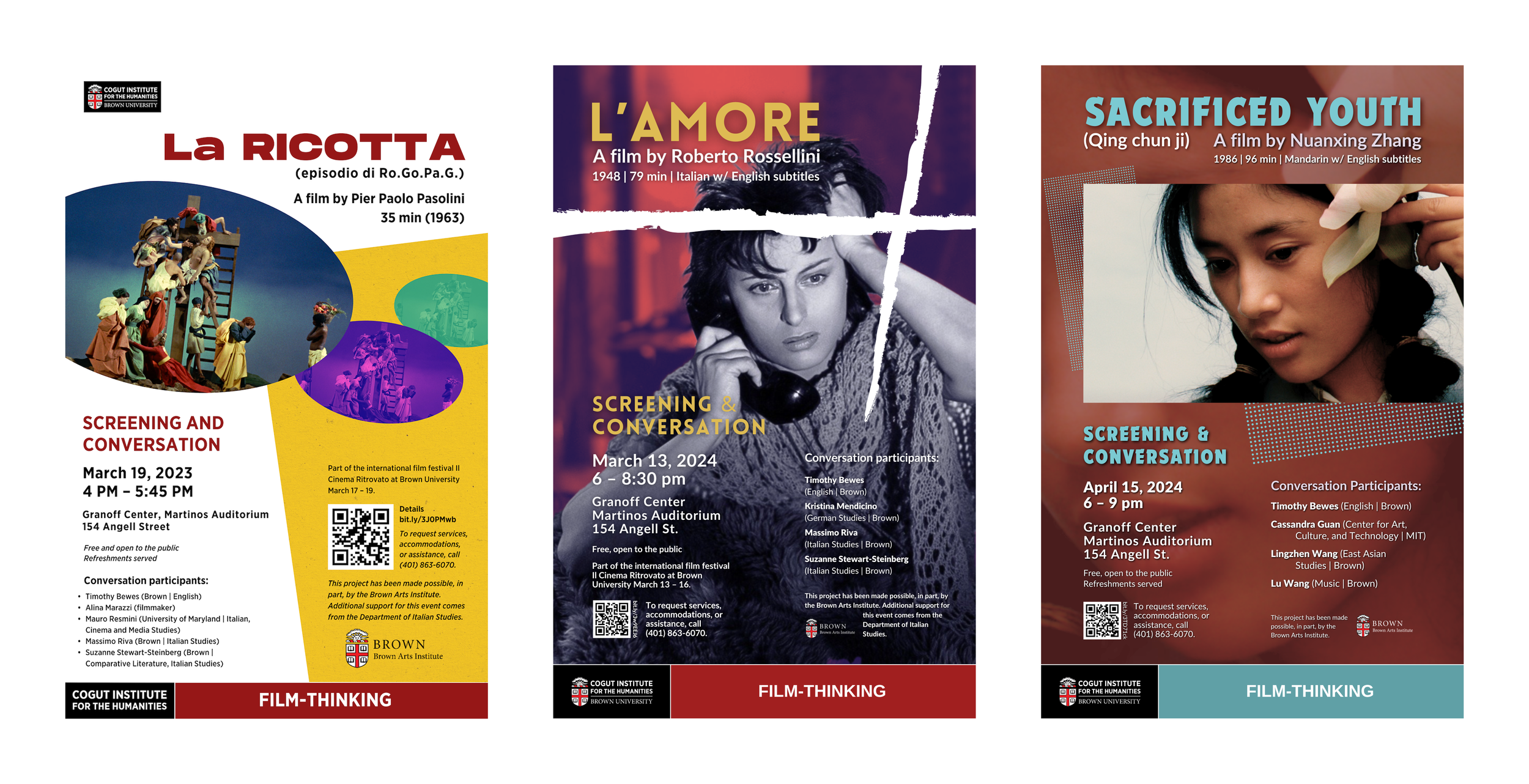Attracting new attendees to humanities programming
Event Posters, 2021–present
Working with a busy, on-campus constituency
▻ The Challenge
The Cogut Institute for the Humanities organizes or co-sponsors approximately 60 events per year, targeted largely at students and faculty on campus. Although most of the promotion for these is managed electronically, printed posters remain a significant medium for attracting attendees.
This is true because of the regular turnover in student population, and also because the Cogut Institute isn’t a department with its own degree programs, meaning that it lacks a major captive audience. Posters serve to attract the attention of new students and others who haven’t yet followed the institute online.
▻ My Process
I gather design ideas directly from event conveners, from speakers’ abstracts, or from the blurbs for their books, then draft one or more designs with variations and share these with my teammates for feedback on aesthetic and legibility, before sharing finalized posters with the event conveners.
With so many posters to design — among my many other communications projects for the institute — I have relatively little time to devote to designing each individual poster, but I gather insights from every project and implement new ideas in working on subsequent projects.
Developing a design lexicon
▻ Organizing Information
Events at the Cogut Institute often have multiple speakers, come in series, or have secondary sessions such as workshops for smaller audiences. Posters therefore require large amounts of text or multiple sets of details, making it difficult to create striking designs and convey information hierarchy.
However, careful use of fonts, text sizes, colors, and graphic elements can create visually appealing pattnerns and movement that guides a reader’s eye.
▻ Conveying Capacious Themes
Cogut Institute events also typically explore themes or subjects from multiple angles and in nuanced ways in order to catalyze dialogue among scholars across disciplines. But how can a designer illustrate things that can’t readily be summarized?
The annual “Collaborative Public Workshop,” for example, has the broad theme of collaborative, interdisciplinary research. No one concrete image could possibly suggest this, so considering how such research brings multiple methods to bear on shared subjects, I instead develop abstract imagery suggesting overlap, interconnectedness, entanglement, etc.
Iterating within and beyond an individual project
▻ Drafting in Multiples
For every poster project, I create multiple rough drafts, or a single rough draft with multiple color or typographical variations, to share with my team and other stakeholders so that they can choose favorites or suggest alternatives. This helps me to identify ideas that work and focus on those.
The conveners of the colloquium “Why Me?” had suggested imagery involving mirrors, so I produced drafts using different mirror art. When I shared these drafts, the conveners had a clear preference for imagery that avoided indicators of race and gender, so I moved forward with that.
▻ Refining Over Time
A reality of working on posters for events is that I have limited time for each project and hard deadlines. At some point, a poster simply has to be good enough to print and distribute to promote the event, even if I’m not completely happy with the design.
But in working on posters over time, I experiment and learn better practices that inform new projects. This is especially true of posters for events in a series, where I can more easily adapt patterns from past events and spend my limited time more effectively.














